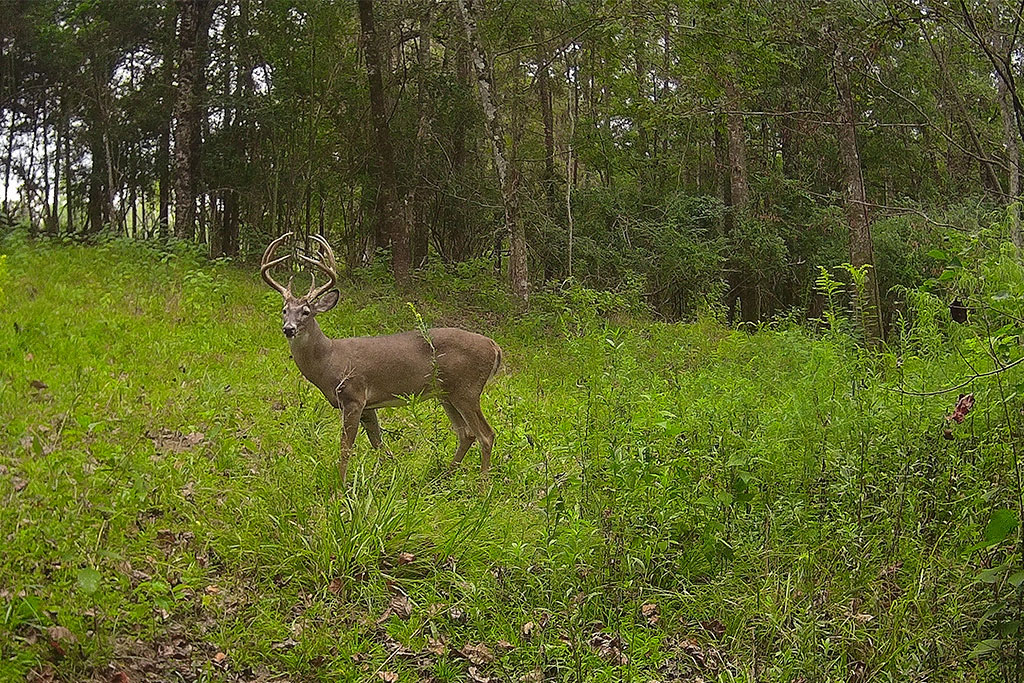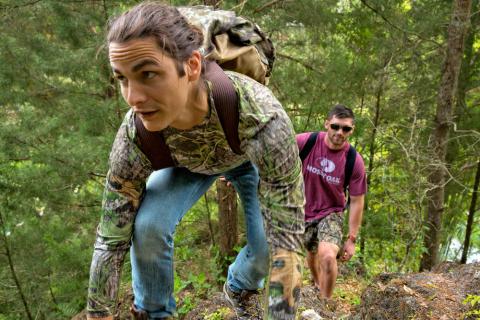Gil Lackey

Below are some tips to help you catch and keep whitetails in front of the lens as well as some input on how to make your photos more interesting. Although we often see more deer in open areas, they are usually more comfortable in cover, especially if there’s an unusual, smelly box strapped to a tree in front of them. Go the extra mile (or 50 yards) by setting up in a more remote area with a tree canopy.
Trails
We often get excited when we see wide game trails plowing through the snow or CRP fields. If you’re looking for a doe group or some young bucks, hang your camera overlooking the beaten track. You might even catch a cat, cow or coyote on one of these critter highways. If you’re looking for a sneaky, mature buck, it’s often more productive to set up on more discreet trails running along the sides of ridges or to case out natural corridors like thin patches of woods bisecting fields or breaks in fence lines.
Beaver Dams
Another productive bottleneck setup is a beaver dam, where almost every critter in the woods opts to cross at some time or another. If there’s no dam, there are almost always a couple of obvious creek or ditch crossings where deer have left hoof prints in the mud. Hang a camera so you get the deer along with the scenery of the creek.
Water Source
When deer are thirsty during a summer drought or during the chase phase of the rut, it pays to play near water. The smaller the water source, the better. In fact, a puddle is a great place to set up a camera. For a more striking water shot, wade out a few and hammer in a fence post or a commercial cam mounting post. Affix your cam facing the bank where hoof prints reveal the whitetails’ favorite spot to drink.
Scrapes and Rubs
Use sex as a provocative photoshoot. You can set up on a rub line to find out which bucks are wearing out those thick tree trunks. Or monitor a large scrape under a licking branch. You can make your own scrape and doctor it up with commercial scents or even your own urine. A less dependable but more compelling approach is to set a cam on a high visibility spot in a field overlooking a buck decoy during the pre-rut or rut. You can even set up two cams, with one in photo mode and the other in video mode. Your deke may get pounded into the dirt, but the shocking footage will make it worth it!
Fields and Food Plots
Many of you probably already use fields and food plots for your trail camera sets. Your “bait” may be the size of a football field, so crank up the flash power to reach from end zone to end zone. Interestingly enough, a lot of bucks never even enter the field during the frisky phase. Try putting the camera on the downwind edge of the field facing into the woods to catch bucks cruising for does during the rut.
Feeding/Mineral Sites
Lastly, the most popular and perhaps the most successful deer trail cam lure is food, whether in the form of corn, mineral licks, natural forage, or any of the oodles of commercial attractant varieties. Just be sure you follow all game laws for your area as some places don’t allow supplemental feeding. Consider lengthening the trigger interval to a minute or more lest you fill your entire memory card in a couple of hours with photos of the same doe, raccoon, squirrel, bear, crow or other furry creature dilly-dallying over a food source.































